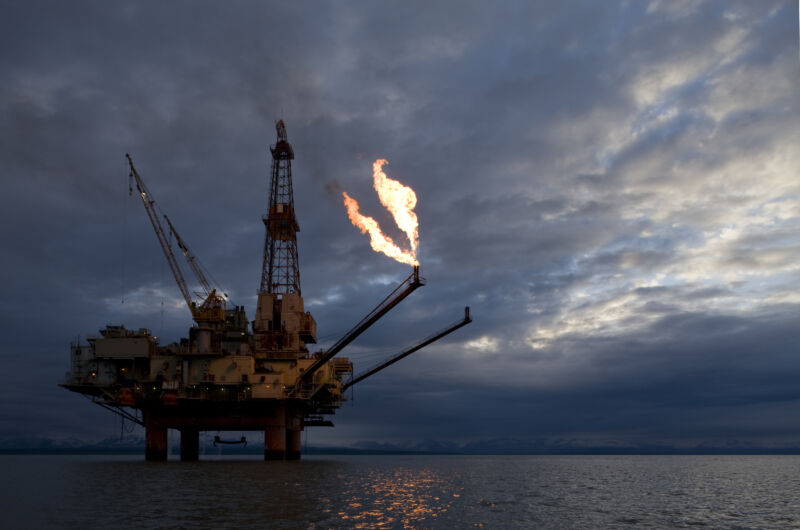potent —
Limiting greenhouse gases is apparently not part of “environmental protection.”
Kate Cox
–

Enlarge / A natural gas flare from an offshore oil drilling rig in Cook Inlet, Alaska.
The Environmental Protection Agency this week finalized a rule that kills off Obama-era limitations on how much methane, a potent greenhouse gas, oil and natural gas producers are allowed to emit into the atmosphere—even though industry leaders didn’t want the changes.
The changes to the rules, known as the New Source Performance Standards (NSPS), remove some segments of the industry from being covered under the existing standards at all, and these changes also lift the methane caps on other segments, the EPA announced on Thursday.
The oil and gas industry basically splits into three big buckets of activity: upstream, meaning the actual drilling for oil or gas; midstream, which is the world of storage and pipelines; and downstream, that last mile where products are refined and sold. The current changes apply to the downstream and midstream segments, as the EPA broke down in a graphic (PDF).
The midstream segment, including storage tanks, compressors, and pneumatic controllers, are no longer regulated under the NSPS at all. Drillers in that upstream segment are still subject to regulation, but that regulation now all but eliminates requirements for businesses to monitor, minimize, and repair methane leaks.
The changes will “reduce regulatory burdens for oil and natural gas entities while protecting human health and the environment,” the EPA said in a press release.
What next?
Methane is an incredibly potent greenhouse gas, roughly 30 times more effective at trapping heat than carbon dioxide. The EPA’s own analysis (PDF) estimates roughly 400,000 additional short tons of methane will be released into the atmosphere by 2030 under the new standards as compared to the 2016 rule.
Even that number, however, may not be a high enough estimate. Repeated studies have found that the EPA drastically underestimates methane emission from oil and gas production.
“The literature has coalesced—80 percent of papers show that methane from oil and gas leaks is two to three times higher than the EPA’s estimates,” Robert Howarth, an expert at Cornell University, told The New York Times. “It’s crazy to roll back this rule… Twenty-five percent of the human-caused warming over the past 20 years is due to methane. Methane is going up. We need it to go down.”
Meanwhile, the rule change, according to the EPA, will provide roughly $83 million in savings and benefits per year to the extraction industry. That’s equivalent to about 0.002 percent of the industry’s $3.3 trillion in global revenues in 2019—at most, corporate pocket change.
The large players in the industry don’t want that pocket change back, either. Representatives for Shell, BP, and Exxon Mobil all told NPR that they would prefer the regulation had been left alone. “The negative impacts of leaks and fugitive emissions have been widely acknowledged for years, so it’s frustrating and disappointing to see the administration go in a different direction,” Gretchen Watkins, president of Shell’s US business, said.
Environmental groups, such as the Environmental Defense Fund, are already planning to sue over the reversal, and they’ll likely have company from several states.
“It’s not only negligent, it’s unlawful,” California Attorney General Xavier Becerra said in a written statement. “We won’t sit silently while the EPA allows this super pollutant to rapidly warm our atmosphere.”

